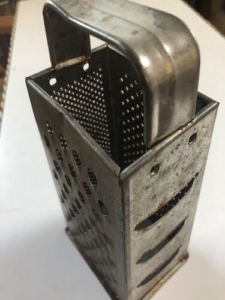The History of Graters: From Ancient Times to Modern Kitchens
Graters have been an essential cooking tool for centuries, allowing cooks to easily shred, grate or zest ingredients for a variety of recipes. From the earliest days of cooking, humans have used rudimentary tools to break down food into smaller pieces, but it wasn’t until the invention of the grater that the process became more efficient and precise. In this article, we’ll take a journey through the history of graters, from their humble beginnings to their current use in modern kitchens.

Ancient Grating Tools
The earliest graters were likely made of stone or shell and were used by ancient civilizations to grate foods like nuts, seeds, and roots. These graters were typically made by carving or chiseling grooves into the surface of the stone or shell, creating a rough surface that could be used to shred or grate food. These early graters were not as efficient as modern ones, but they were an important step in the development of grating tools.
Medieval Grating Tools
During the Middle Ages, graters were made of metal, often with a flat surface and sharp blades that could be used to grate or shred food. These graters were typically handheld and were used to grate hard cheeses, spices or other ingredients. The design of the medieval grater was relatively simple, but it was effective, and it remained popular for centuries.
18th Century Graters
In the 18th century, graters became more advanced, with the invention of the box grater. This type of grater had four or more sides, each with a different size of grating blades, allowing cooks to shred or grate ingredients to different thicknesses. Box graters were also easier to use than handheld graters, as they had a larger surface area and could be placed on a stable surface while in use.
19th Century Graters
In the 19th century, graters underwent further advancements, and the rotary grater emerged as a new type of grater. This grater featured a drum with a grating blade inside that could be rotated by hand, enabling cooks to quickly and efficiently grate hard cheeses, nuts, and other ingredients. The rotary grater was particularly popular in Europe and was widely used to grate large quantities of cheese for dishes like fondue or raclette. With its ease of use and efficiency, the rotary grater became an essential tool in the kitchen and helped to revolutionize the way that ingredients were prepared for cooking.

Modern Graters
Today, there is a wide array of graters available, each with their own unique designs and features to cater to different culinary needs. One of the most popular types of graters is the micro plane grater, which boasts very fine teeth that are perfect for grating citrus zest, fresh ginger, or hard cheeses like Parmesan. Another type of grater that’s growing in popularity is the mandolin, which can be used to slice or julienne vegetables or fruits with ease. These modern graters are designed to be both efficient and precise, allowing cooks to easily grate, shred, or zest ingredients for their favorite recipes. Whether you’re a professional chef or a home cook, there’s a grater out there that will suit your needs perfectly.
In conclusion, graters have come a long way since their humble beginnings, and today they are an essential tool in any kitchen. From ancient stone graters to modern microplane graters, the evolution of graters has been driven by the need for more efficient and precise tools to process food. With their wide range of designs and capabilities, there is a grater out there for every cooking need, whether you’re a professional chef or a home cook looking to prepare delicious meals.